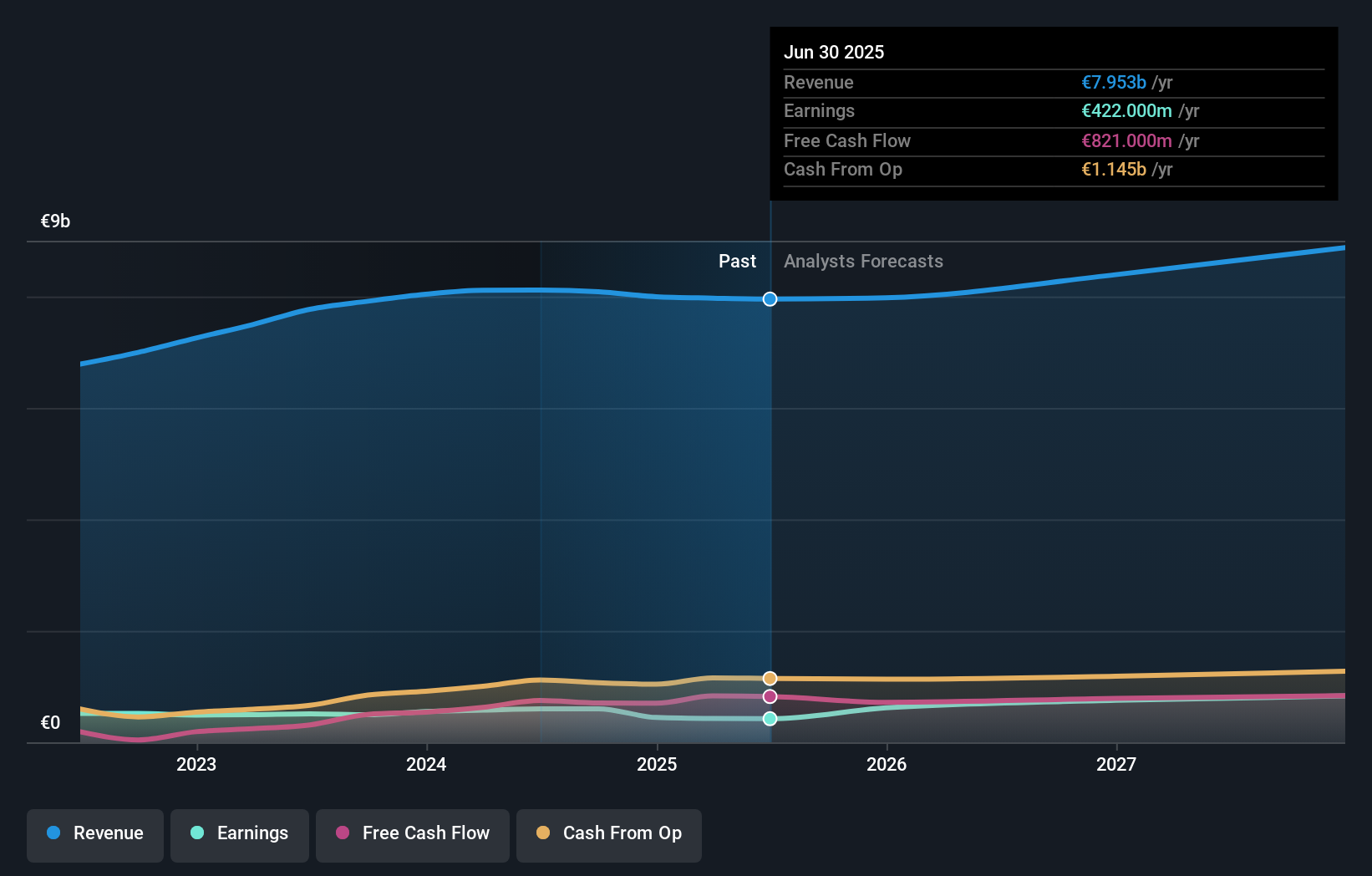Institutions own 24% of Knorr-Bremse AG (ETR:KBX) shares but private companies control 59% of the company

Key Insights
- The considerable ownership by private companies in Knorr-Bremse indicates that they collectively have a greater say in management and business strategy
- The largest shareholder of the company is Stella VermÖGensverwaltungs- GmbH with a 59% stake
- Institutional ownership in Knorr-Bremse is 24%
A look at the shareholders of Knorr-Bremse AG (ETR:KBX) can tell us which group is most powerful. We can see that private companies own the lion's share in the company with 59% ownership. That is, the group stands to benefit the most if the stock rises (or lose the most if there is a downturn).
Institutions, on the other hand, account for 24% of the company's stockholders. Institutions often own shares in more established companies, while it's not unusual to see insiders own a fair bit of smaller companies.
In the chart below, we zoom in on the different ownership groups of Knorr-Bremse.
View our latest analysis for Knorr-Bremse

What Does The Institutional Ownership Tell Us About Knorr-Bremse?
Many institutions measure their performance against an index that approximates the local market. So they usually pay more attention to companies that are included in major indices.
Knorr-Bremse already has institutions on the share registry. Indeed, they own a respectable stake in the company. This implies the analysts working for those institutions have looked at the stock and they like it. But just like anyone else, they could be wrong. If multiple institutions change their view on a stock at the same time, you could see the share price drop fast. It's therefore worth looking at Knorr-Bremse's earnings history below. Of course, the future is what really matters.

Hedge funds don't have many shares in Knorr-Bremse. The company's largest shareholder is Stella VermÖGensverwaltungs- GmbH, with ownership of 59%. This implies that they have majority interest control of the future of the company. In comparison, the second and third largest shareholders hold about 3.1% and 3.0% of the stock.
While studying institutional ownership for a company can add value to your research, it is also a good practice to research analyst recommendations to get a deeper understand of a stock's expected performance. There are a reasonable number of analysts covering the stock, so it might be useful to find out their aggregate view on the future.
Insider Ownership Of Knorr-Bremse
The definition of company insiders can be subjective and does vary between jurisdictions. Our data reflects individual insiders, capturing board members at the very least. The company management answer to the board and the latter should represent the interests of shareholders. Notably, sometimes top-level managers are on the board themselves.
Insider ownership is positive when it signals leadership are thinking like the true owners of the company. However, high insider ownership can also give immense power to a small group within the company. This can be negative in some circumstances.
We note our data does not show any board members holding shares, personally. Not all jurisdictions have the same rules around disclosing insider ownership, and it is possible we have missed something, here. So you can click here learn more about the CEO.
General Public Ownership
With a 14% ownership, the general public, mostly comprising of individual investors, have some degree of sway over Knorr-Bremse. While this size of ownership may not be enough to sway a policy decision in their favour, they can still make a collective impact on company policies.
Private Company Ownership
We can see that Private Companies own 59%, of the shares on issue. Private companies may be related parties. Sometimes insiders have an interest in a public company through a holding in a private company, rather than in their own capacity as an individual. While it's hard to draw any broad stroke conclusions, it is worth noting as an area for further research.
Next Steps:
It's always worth thinking about the different groups who own shares in a company. But to understand Knorr-Bremse better, we need to consider many other factors. Consider risks, for instance. Every company has them, and we've spotted 1 warning sign for Knorr-Bremse you should know about.
Ultimately the future is most important. You can access this free report on analyst forecasts for the company.
NB: Figures in this article are calculated using data from the last twelve months, which refer to the 12-month period ending on the last date of the month the financial statement is dated. This may not be consistent with full year annual report figures.
Valuation is complex, but we're here to simplify it.
Discover if Knorr-Bremse might be undervalued or overvalued with our detailed analysis, featuring fair value estimates, potential risks, dividends, insider trades, and its financial condition.
Access Free AnalysisHave feedback on this article? Concerned about the content? Get in touch with us directly. Alternatively, email editorial-team (at) simplywallst.com.
This article by Simply Wall St is general in nature. We provide commentary based on historical data and analyst forecasts only using an unbiased methodology and our articles are not intended to be financial advice. It does not constitute a recommendation to buy or sell any stock, and does not take account of your objectives, or your financial situation. We aim to bring you long-term focused analysis driven by fundamental data. Note that our analysis may not factor in the latest price-sensitive company announcements or qualitative material. Simply Wall St has no position in any stocks mentioned.
About XTRA:KBX
Knorr-Bremse
Develops, produces, and markets brake systems for rail and commercial vehicles and other safety-critical systems worldwide.
Flawless balance sheet and fair value.
Similar Companies
Market Insights
Community Narratives



